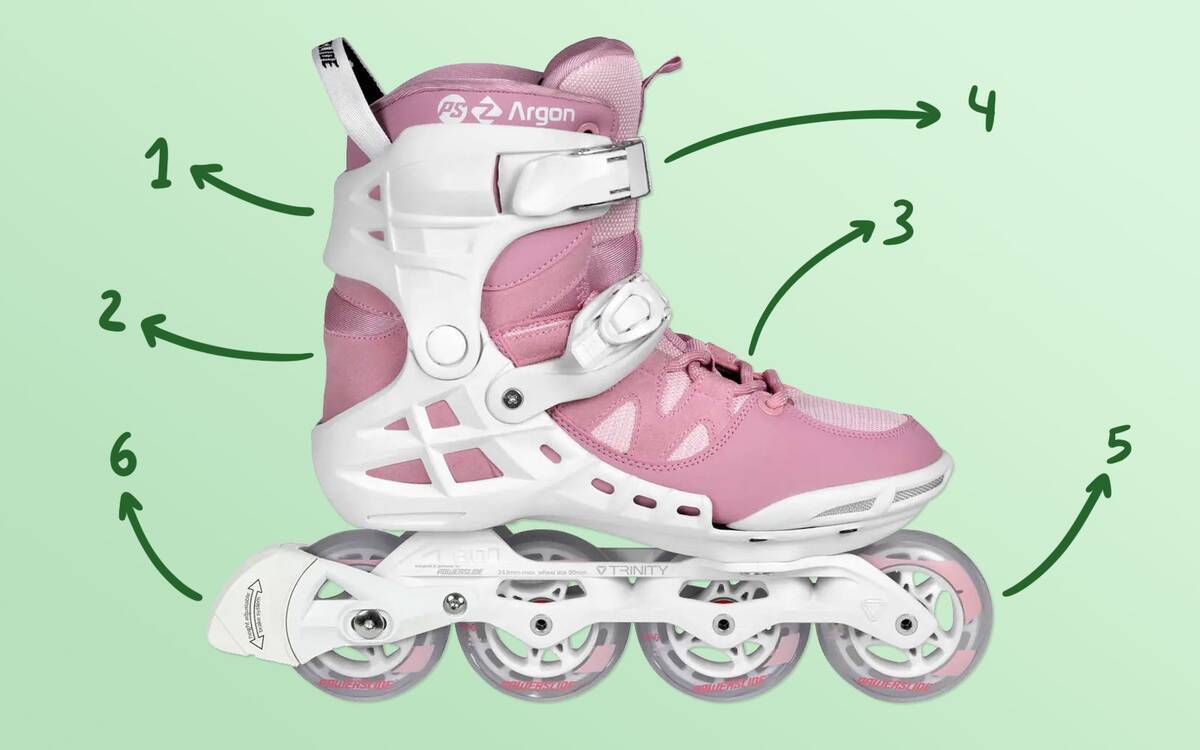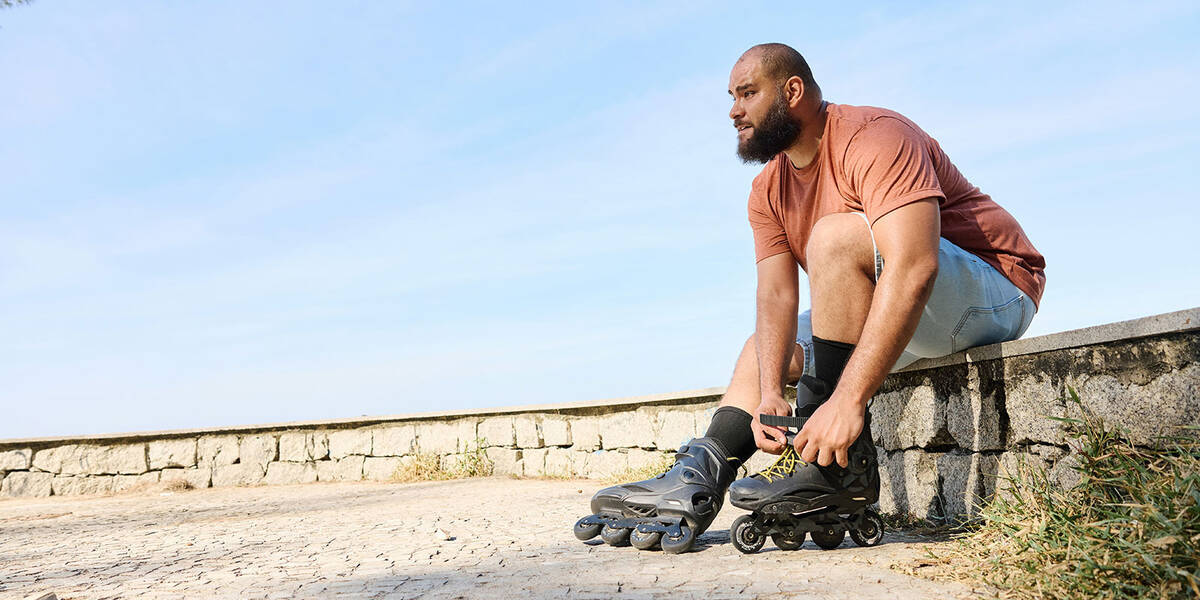Choosing the Finest Inline Skates for Novices
When selecting the ideal inline skates for newcomers, it's vital to choose a pair that ensures comfort and stability for a rewarding skating journey. To assist you in navigating the extensive range of options for your first inline skates, we have gathered some of our top recommendations in this guide. Here, you will find all the necessary information to choose the right pair of novice inline skates.
Within our collection of inline skates, you will encounter various excellent choices suited for beginners. Skates that cater to beginners usually fall under the categories of recreational or fitness inline skates. These terms often indicate that the skates are crafted for an all-purpose use rather than for specialised activities such as speed or aggressive skating. Perfect for travel, exercise, and casual fun, they provide an excellent combination of performance and comfort.
Overview
Which Are the Top Inline Skates for Novices?

When selecting beginner inline skates, consider these features for optimum performance and comfort:
- High cuffs for side support: Provides stability and ensures your ankles are well-supported.
- Breathable liners with foam: Offers comfort and keeps your feet ventilated during skating.
- Lacing options: Choose from traditional laces, speed lacing, or BOA systems for a safe fit.
- Powerstrap and buckle: Secures your foot firmly in place.
- Small wheels (no larger than 90 mm in diameter): Suitable for novices as they enhance control and manoeuvrability.
- Heel brake: Allows you to manage your speed and stop safely.
In our range of inline skates, you'll notice that models catering to beginners are available for all ages and tastes. When you explore one of our categories for inline skates, it is advisable to filter results according to skill level.
How to Determine the Right Size for Beginner Inline Skates

Ensuring the correct skate size is crucial when starting your new adventure on wheels. When ordering skates online, consult the size guide for the specific model you have in mind and select your skates based on an accurate foot measurement.
To measure your foot accurately, begin by placing your heel against a wall. Then, measure the distance from the wall to the tip of your longest toe, ensuring the measurement is made at a 90-degree angle from the wall.
Methods for precise foot measurement
- Use a solid, flat surface: Stand with your back against the wall on a hard, flat surface to ensure precise measurements.
- Wear the socks you plan to skate in: Put on the type of socks you intend to use with your skates while measuring your feet.
- Place a piece of paper against a wall: Lay a sheet of paper on the floor with one edge aligned with the wall.
- Stand straight: Maintain a straight posture with your heel against the wall and your foot flat on the paper.
- Mark the toe tip: Make a mark on the paper at the tip of your longest toe.
- Measure both feet: Measure each foot, as one may be slightly larger than the other. Use the larger measurement to choose your skate size.
Find your ruler and measure the length of your foot on the paper. You've now identified your mondopoint size, which you'll use when consulting the size charts for inline skates.
What is the Proper Fit for Inline Skates?

Inline skates should have a snug fit but not cause discomfort. If they're loose, it can hinder the energy transfer from your legs to the skates. Consider these factors when trying out your first pair of skates:
- Break-In Period: Skates often require a break-in period. They might feel stiff at first but should become more comfortable after some use.
- Heel Lock: Your heel should be firmly seated in the heel cup with little lift when skating. A solid heel lock aids control and reduces the likelihood of blisters.
- Toe Space: Toes should be near the tip of the skates without being cramped, allowing slight wiggle room.
- Ankle Support: The ankle area should feel secure, not overly tight to impede circulation. You should be able to bend your knees comfortably without excessive pressure on the ankles.
- Closure Systems: Adjust laces, buckles, and straps to get a secure fit. The skates should be tight enough for support, yet comfortable enough to permit good blood circulation.
Break-In Period for Inline Skates
As a novice, your feet are entirely unaccustomed to being enveloped by skates. Even perfectly fitting skates will have a break-in period, and for beginners, the skin on feet, ankles, and shins needs to build resistance.
Consider these tips to ease the break-in period:
- Take Your Time: Breaking in your skates might take a month of skating. Begin with shorter sessions and gradually lengthen them. Some initial discomfort is expected as your feet and ankles adapt to skating.
- Relax Your Feet: Aim to keep your feet relaxed while skating and avoid tightening laces or straps too much.
- Blister Prevention: Experiment with different socks to see which are most comfortable for skating. Insoles can also be beneficial, as can trying assorted socks. Footies may notably reduce blisters, especially around heels and ankles.
If persistent pain or discomfort arises, consult a medical professional. Relish the experience as your skates become an extension of your feet and skating style.
Check out our article for further insights on insoles, footies, and breaking in new skates:
What is the Method for Braking with Beginner Inline Skates?
Beginner inline skates come with brakes situated at the rear, typically in the form of a heel brake. This setup gives beginners an advantage as the brake technique with a heel brake is more intuitive for those still learning skate control. Simply put, a standard heel brake provides a safer, simpler solution for stopping, a definite benefit for beginners.
Essential Protective Gear for Novice Inline Skaters

It's imperative to wear protective gear when inline skating to safeguard your safety. Below is a list of the protective items you should have as a novice inline skater:
- Helmet: A properly fitting helmet is vital for protecting your head from serious injuries.
- Wrist Guards: These provide support and cushioning to help prevent wrist injuries in case of falls.
- Knee Pads: Knee pads shield your knees from abrasions, contusions, and fractures.
- Elbow Pads: Elbow pads protect your elbows from impacts and scrapes.
Using this protective equipment can help reduce the risk of injuries, making your inline skating experience safer and more enjoyable.
Wearing protective gear is a crucial component of safely enjoying inline skating. We advise that all novices purchase protective gear for inline skating.

